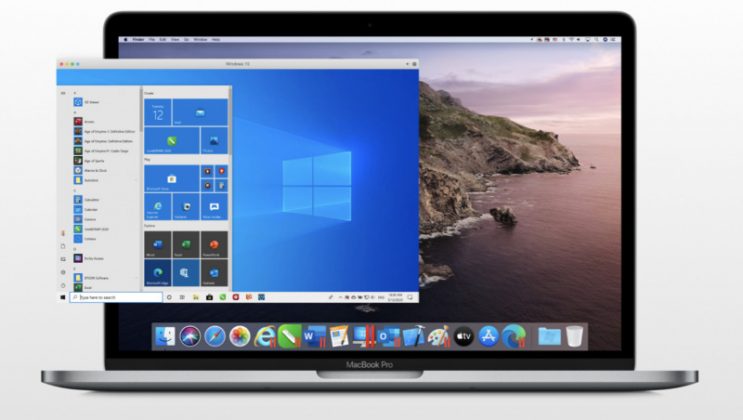

- PARALLELS DESKTOP M1 MAC INSTALL
- PARALLELS DESKTOP M1 MAC DRIVERS
- PARALLELS DESKTOP M1 MAC WINDOWS 10
- PARALLELS DESKTOP M1 MAC LICENSE
installing vmxnet3 and WDDM drivers as part of the VMware Tools), so it’s a step forward, but still not yet to a “ready to release” state. At least now the rest of the Windows 11 support is there (e.g. But for “normal” people, they’re going to want something easier. So that’s a positive for VMware Fusion - at least for me, that achieves my primary use case. That PXE boot works fine, so I can load a custom boot image: It just acts like there isn’t an ISO there and instead tries to PXE boot. I can then go through the rest of the wizard screens (a little more advanced than the Parallel’s experience):īut weirdly, it won’t boot from that ISO.
PARALLELS DESKTOP M1 MAC INSTALL
In other words, “don’t blame us for this mess, blame Microsoft - use whatever mechanism you can to get an ISO so you can install the Windows 11 OS on ARM64.”īut hey, now since Parallels has figured this out (maybe they’re part of that “private partner program”?) I can at least use the ISO that they downloaded to go through the process.
PARALLELS DESKTOP M1 MAC WINDOWS 10
Users who have valid licenses should have been provided a method to acquire a Windows 10 or 11 ISO file from Microsoft. There are several ways to obtain an ISO for Windows, including from private partner programs that Microsoft offers. If you read through the VMware Fusion 22H2 Tech Preview Testing Guide, you can sense their frustration with Microsoft: While it felt like VMware was previously biting their tongue when discussing why they didn’t support Windows 11, this time it’s different. The biggest change: significant changes to support Windows 11. The blog post for the 22H2 release goes through the list.

But as you would expect from VMware, they at least share more detailed information about what’s new. This one feels like it’s been in a “Tech Preview” state forever, much longer than I would have anticipated. It seems to be a Secure Boot limitation, although the same binary loads just fine from an attached USB key. Weirdly, even though I can see the PXE option in the “Boot Manager” menu, I can’t boot to the Linux shimaa64.efi binary. Of course I always want to see the bare metal options, e.g. So everything is pretty much as you would expect. Sharing a folder from your Mac into the Windows VM works just fine (although I don’t remember if that was supported before - regardless, it works now). They can make it easy to install, but it’s up to you to pay Microsoft.Īs before, performance is fine. So no license, but that’s pretty much as expected. But that raises the next question: Am I licensed for this Windows 11 installation, or do I still need to buy a license? A quick check in Settings confirms that:
PARALLELS DESKTOP M1 MAC LICENSE
A quick check (mounting the ISO on a Windows machine and using DISM to look at the Windows image file) confirms that:Īfter accepting the license terms (EULA) for Windows, you’re automatically logged on by Parallels, with your install ready to go: Translating that file name, it’s a standard “client” image of Windows 11 21H2 (patched), so in theory that ISO contains all the retail SKUs.

Looking at the VM properties during that install, I can see that it has attached an ISO:Īnd searching for that file on my Mac, I can find it in the “Downloads” folder. So let’s try it.Īfter selecting “Get Windows 11 from Microsoft” it then began downloading:Īnd as soon as that download finished, it began installing: This doesn’t have any footnotes about it not supporting arm64. So what’s new in Parallels Desktop? Beyond the typical stuff (support for the latest OSes, support for the latest Apple silicon, etc.), there’s also the”ownload, install, and configure Windows 11 in one click.” Previously, that was only supported on x86-based Macs. As both Parallels Desktop and VMware Fusion have both been updated, it’s worth revisiting that blog. My blog from February compared the options available at the time. Virtual machines are usually more productive for those types of activities, hence my desire to run virtual machines on my M1 Mac Mini.

I probably own more ARM64-based machines than then typical person, and I used those somewhat regularly for testing OS deployment scenarios.


 0 kommentar(er)
0 kommentar(er)
